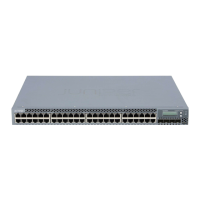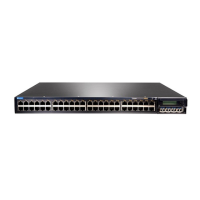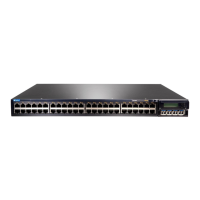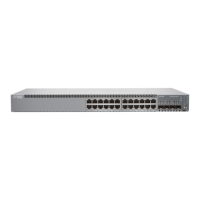Related
Documentation
Example: Configuring IP Directed Broadcast on an EX Series Switch•
• Understanding IP Directed Broadcast for EX Series Switches on page 23
Tracing Operations of an Individual Router or Switch Interface
To trace the operations of individual router or switch interfaces, include the traceoptions
statement at the [edit interfaces interface-name] hierarchy level:
[edit interfaces interface-name]
traceoptions {
flag flag;
}
You can specify the following interface tracing flags:
•
all—Trace all interface operations.
•
event—Trace all interface events.
•
ipc—Trace all interface interprocess communication (IPC) messages.
•
media—Trace all interface media changes.
The interfaces traceoptions statement does not support a trace file. The logging is done
by the kernel, so the tracing information is placed in the system syslog files.
Related
Documentation
Tracing Operations of the Interface Process•
• Tracing Interface Operations Overview
Tracing Operations of the Interface Process
To trace the operations of the router or switch interface process, dcd, include the
traceoptions statement at the [edit interfaces] hierarchy level:
[edit interfaces]
traceoptions {
file <filename> <files number> <match regular-expression> <size size> <world-readable |
no-world-readable>;
flag flag <disable>;
no-remote-trace;
}
By default, interface process operations are placed in the file named dcd and three 1-MB
files of tracing information are maintained.
You can specify the following flags in the interfaces traceoptions statement:
•
change-events—Log changes that produce configuration events.
•
config-states—Log the configuration state machine changes.
101Copyright © 2015, Juniper Networks, Inc.
Chapter 2: Configuration Tasks
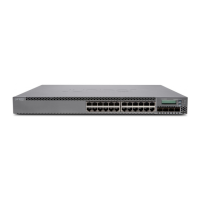
